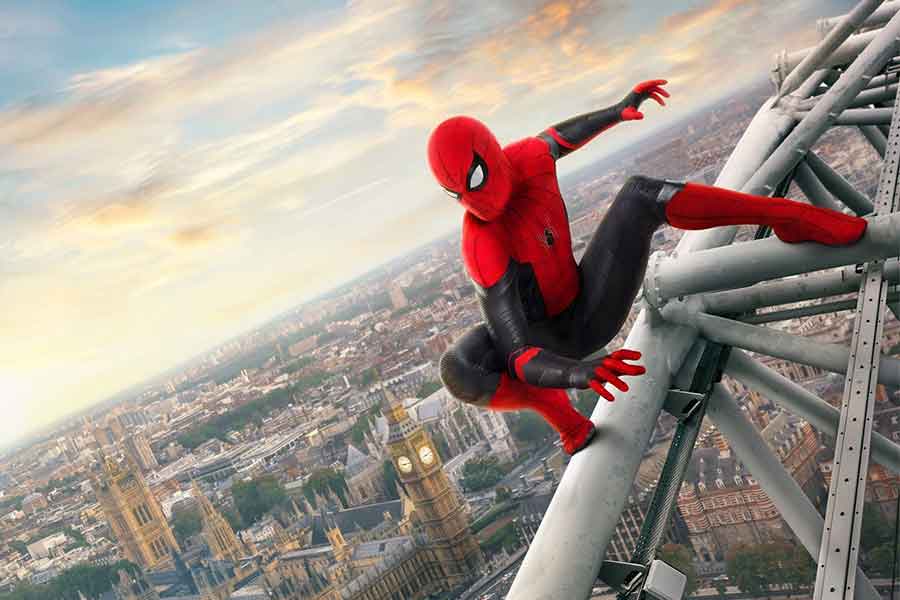
In an age where pop-psychology has taken over our collective imagination, Hollywood is as much interested in studying antagonists as it is in fawning over one-dimensional hero figures. This is what the release of Maleficent: Mistress of Evil within just a week of Joker tells us. And while both of the movies are obviously derivative, the transition is a welcome detour into a new age of cinema that holds society responsible for individuals’ destructive behaviors.
Unfortunately, even if the ambition is appreciable, making nuanced character studies about infamous villains is not a walk in the park. It requires psychoanalytical knowledge, observation and the ability not to be bogged down by endless references to source material. This is a test the Joker passes but Mistress of Evil fails miserably.
The sequel picks up where Maleficent left off, after humans and fairies had reconciled and her goddaughter, Princess Aurora, better known as Sleeping Beauty, was crowned queen. That was supposed to be a happy-ever-after ending but studio executives thought they could make more money. Subsequently, Maleficent and Sleeping Beauty have to endure some more conflict we all know they will survive without a scratch.
After Princess Aurora agrees to give her hand in marriage to the prince of a neighboring kingdom, Maleficent is invited to the palace of the in-laws for a dinner. The idea for the invitation comes from Queen Ingrith (Michelle Pfeiffer), Sleeping Beauty’s soon to be mother-in-law, who is very much in the mold of the Game of Thrones fictional character Cersei Lannister or any one of the psychotic world leaders every country seems to be manufacturing in ever colorful mannerism.
Queen Ingrith wants to wipe out fairies, in a classic case of species cleansing, while Maleficent has to defeat her without at the same time alienating humans and worsening the tension between the two species. Maleficent faces a dilemma faced by many world leaders today. Fortunately for her, she exists in a fairy tale. We are not so lucky.
The influence of HBO’s Game of Thrones is very obvious in the movie. It fuses together political intrigue and fantasy to create a world where power becomes the ultimate arbiter. Granted, the movie is not remotely gritty, sexually suggestive or violent. And the ending is as happy-go-lucky as it gets. But the theme and symbolism, although pathetically explored, is grave and politically sensitive.
It is also hard to miss the Maleficent-Queen Ingrith face-off, highly reminiscent of the bloody rivalry between Daenerys Targaryen and Cersei. What is even more similar is how poorly both films resolve the conflict between the main characters.
Mistress of Evil may not deliver on the ambitious theme and concept it sets itself up for, but it does manage to get two things right. One is the superb special effects. The creativity here was only matched by the diverse and tasteful use of color and camera movements.
But the best thing about the movie was Pfeiffer, who seemed to have been waiting to play the role of an evil queen. In a better film, her performance would have garnered attention, but she is wasted in this movie. Her character is given a cliché backstory and is made out to be a cartoon antagonist. By the time the film is finished with Queen Ingrith, she is reduced to a one-dimensional character.
Pfeiffer does not let this bog her down. She performs funny and dramatic scenes with the same level of professionalism that a much better movie deserved. She proves in two hours why she would have been better served playing the role of Cersie in Game of Thrones than a villain in this mess of a movie.
PUBLISHED ON
Nov 02,2019 [ VOL
20 , NO
1018]

Fortune News | Jul 24,2021

Radar | Jun 19,2021

Fortune News | Dec 19,2021

Fortune News | Mar 05,2022

Radar | Nov 27,2021

Films Review | Jul 13,2019

Radar | May 07,2022

Radar | Oct 09,2021

Fortune News | Apr 02,2022

Films Review | Oct 16,2021

My Opinion | 131451 Views | Aug 14,2021

My Opinion | 127803 Views | Aug 21,2021

My Opinion | 125783 Views | Sep 10,2021

My Opinion | 123419 Views | Aug 07,2021

Jun 28 , 2025
Meseret Damtie, the assertive auditor general, has never been shy about naming names...

Jun 21 , 2025
A well-worn adage says, “Budget is not destiny, but it is direction.” Examining t...

Jun 14 , 2025
Yet again, the Horn of Africa is bracing for trouble. A region already frayed by wars...

Jun 7 , 2025
Few promises shine brighter in Addis Abeba than the pledge of a roof for every family...

Jun 29 , 2025
Addis Abeba's first rains have coincided with a sweeping rise in private school tuition, prompting the city's education...

Jun 29 , 2025 . By BEZAWIT HULUAGER
Central Bank Governor Mamo Mihretu claimed a bold reconfiguration of monetary policy...

Jun 29 , 2025 . By BEZAWIT HULUAGER
The federal government is betting on a sweeping overhaul of the driver licensing regi...

Jun 29 , 2025 . By NAHOM AYELE
Gadaa Bank has listed 1.2 million shares on the Ethiopian Securities Exchange (ESX),...